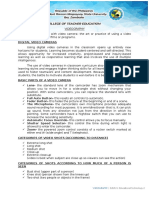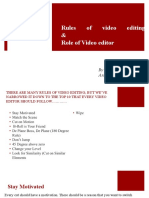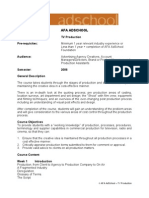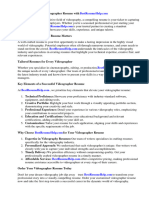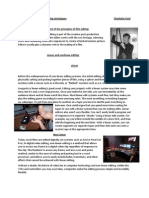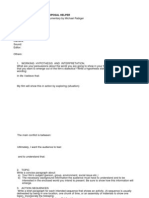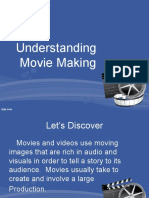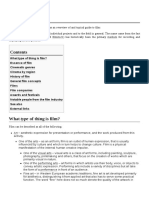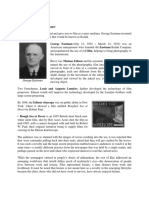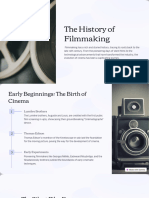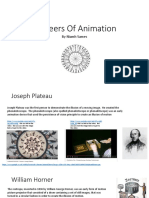0% found this document useful (0 votes)
328 views13 pagesVideo Editing Basics For Learning
The document provides an overview of the history of film from the late 19th century to present day. It describes the key eras including the Silent Era which saw the invention of motion picture cameras, the Classical Hollywood Era which established Hollywood as the film industry center, and the Streaming Era which has led to the rise of streaming platforms. Each era contributed to the development of film and shaped how movies are experienced today.
Uploaded by
Norman DacanayCopyright
© © All Rights Reserved
We take content rights seriously. If you suspect this is your content, claim it here.
Available Formats
Download as DOCX, PDF, TXT or read online on Scribd
0% found this document useful (0 votes)
328 views13 pagesVideo Editing Basics For Learning
The document provides an overview of the history of film from the late 19th century to present day. It describes the key eras including the Silent Era which saw the invention of motion picture cameras, the Classical Hollywood Era which established Hollywood as the film industry center, and the Streaming Era which has led to the rise of streaming platforms. Each era contributed to the development of film and shaped how movies are experienced today.
Uploaded by
Norman DacanayCopyright
© © All Rights Reserved
We take content rights seriously. If you suspect this is your content, claim it here.
Available Formats
Download as DOCX, PDF, TXT or read online on Scribd
/ 13








